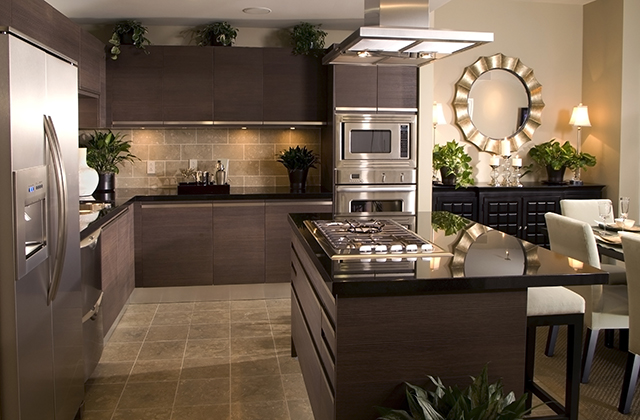Designing a Kitchen on a Budget
Of course you’re eager to get started. But heed some advice from the experts and from people who’ve done the job already: Take your time at the beginning to make sure each decision reflects your taste and meets your needs. You’ll want to live with and love this kitchen for a long time! Kitchen companies Sydney provides complete workplace food service solutions including cafes, micro markets, vending & office coffee all with an emphasis on wellness. Sydney pet doors are available in different sizes whether it is for cat and dog.
Your budget will have a lot to say about materials used in your new kitchen, but so will common sense. You don’t want your kitchen to be a financial burden, so make sure you really need the high-end solution in each case.
Another way to stay in the black without closing off options too soon: Make a list of everything you’d love to have in your new kitchen. Now, divide this list into A) things you need and B) things you want but could live without for now. This will save time later and ensure you don’t lop off something essential when you fall in love with a “could-live-without” item in the showrooms.
Most costs fall under the broad heading of Time (actual person-hours, or labor) or Materials. You can save money on both.
Save Money on Labor
In construction, time is expressed as hourly rates paid to various workers on your project. One way to save big is to invest your time instead of theirs. Put in sweat equity wherever you’re competent to do so. If you can steam off wallpaper, remove old moldings, and carry away debris yourself, you won’t have to pay someone else to do it.
What kinds of labor can you perform yourself? Use common sense. Be careful about tearing out walls on your own (make sure you know where wiring, pipes, and such are located). And steer clear of removing old insulation that may contain asbestos or old paint that almost certainly contains lead. If your home has historical significance, get guidance from an expert before tackling anything.
When it’s time to put on the finishing touches, you can paint the walls, screw on switchplates, and yes, pick up the debris rather than paying someone else to do it. The money you save on labor can pay for some of those luxurious material upgrades you crave!
Save Money on Materials
Marble and granite countertops; state-of-the-art imported fixtures and appliances; hand-crafted, hand-painted wall and floor tiles; custom cabinetry in high-end, furniture-grade woods…the list of luxury materials is endless. If you can’t afford them all, choose the ones that matter most to you — and find artful substitutes for the rest. A few examples:
Marble and granite countertops. If you make pastry, you’ll want a marble inset in your countertop, but you don’t need to be rolling in dough to have it. Compare the cost of real marble and granite to look-alike laminates, and you may decide on the synthetic for the rest of your countertops. Specify a rolled edge to eliminate the back wall seam. If you must have the real thing, specify marble or granite tiles: Nine-inch or 12-inch squares are easier to fabricate and install than running-foot slabs and, therefore, are much less costly.
If famous-name solid-surfacing material is way out of your price range, look for similar solid-surfacing brands that are less expensive. Or choose a plain, matte-finish ivory laminate, and use a rolled edge.
Handmade, custom-colored, imported ceramic wall tiles. Beautiful, artistic, and costly, hand-colored tiles may be too expensive to use throughout but just right as borders and accents. Choose a compatible plain tile for most of the installation, and save the custom pieces for eye-level areas such as the backsplash or a border around a breakfast nook window.
Luxury flooring. Ceramic tile, oak planking with contrasting wood insets and butterfly ties, and marble or granite flooring may be out of reach, but today’s handsome vinyl flooring isn’t. All these looks and more are available at several price points. You probably know how easy no-wax vinyl is to keep looking new, but you may be surprised by how close to the natural materials these floors look. Choose sheet vinyl for seamless easy care, or, if your pattern includes smaller faux-tile designs, you may opt for tile squares you can install yourself.
If you want the look of wood flooring, parquet is less costly than planking. The most practical alternative at a price? Wood-look laminates that get their realistic appearance from a photographic process that captures the graining and variations of genuine wood. For a cutting-edge look, consider concrete with color added during installation. It’s an easy way to bring commercial kitchen chic home.
Custom cabinetry. Many cabinets come in such a wide array of stock sizes and shapes, they assure a virtually custom fit. Use stock cabinets wherever you can, and have matching, custom pieces fabricated to fill in odd spaces. If your budget says pine or oak but your heart says cherry or maple, you may prefer painted rather than stained cabinets to disguise the more prominent grains of the lower-cost woods.
The look of freestanding furniture in the kitchen is hot right now, so you may want to use mostly painted cabinets and splurge on a breakfront or other freestanding unit in the wood of your choice. To finish off the custom look, replace ho-hum hardware with novelty pulls and handles on cabinets and drawers. From pewter forks to verdigris brass leaves, a wealth of style-setting hardware options are available.
While saving money on labor is important, there are some jobs that you will need a professional for. In the next section, we will examine how to hire a professional to design a kitchen. Get in touch with our kitchen designer for your kitchen renovation.


